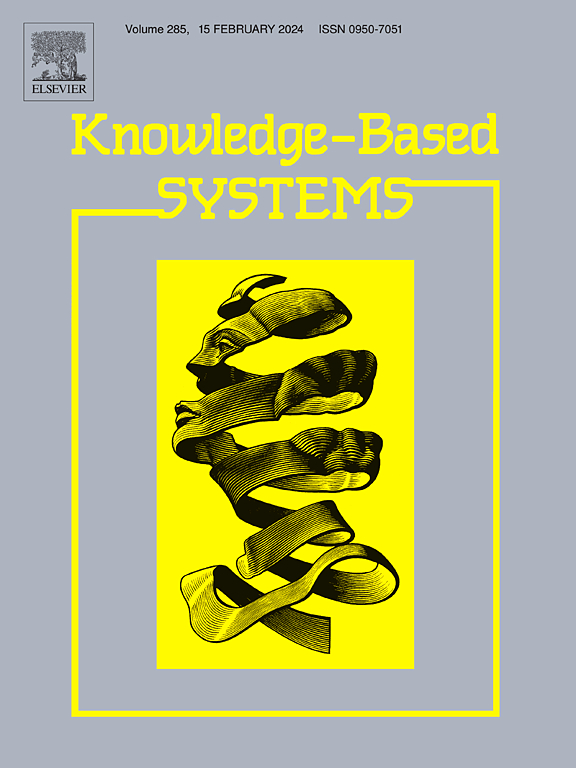为基于惯性的姿势识别寻找最佳和可解释的深度学习模型
IF 7.6
1区 计算机科学
Q1 COMPUTER SCIENCE, ARTIFICIAL INTELLIGENCE
引用次数: 0
摘要
深度学习(DL)模型广泛应用于多个领域,经常被用于姿势识别。这项工作研究了五种用于姿势识别的深度学习架构:卷积神经网络(CNN)、长短期记忆(LSTM)、变换器、混合 CNN-LSTM 和混合 CNN-变换器。在模拟农业和建筑业典型任务的电路中,通过获取惯性数据集,将农业和建筑业的工作姿势作为用例。由于模型性能在很大程度上取决于超参数的选择,因此进行了网格搜索以找到最佳超参数。本文对超参数组合的效果进行了广泛分析,确定了一些普遍趋势。此外,为了揭示黑箱 DL 模型,我们对 CNN 的输出应用了梯度加权类激活映射(Gradient-weighted Class Activation Mapping,Grad-CAM)可解释性方法,以便从每个窗口输出最重要的传感器和时间步骤的角度,更好地理解模型的决策。通过使用卷积特征图作为 LSTM 或 Transformer 的输入,并将两个子网络的输出与训练过程中学习到的权重融合,实现了结合 CNN 和 LSTM 或 Transformer 编码器的创新混合架构。所有架构都成功识别了八个姿势类别,每个架构的最佳模型在测试中的 F1 分数都超过了 91.5%。混合 CNN-Transformer 的最高 F1 分数为 94.33%,推理时间仅为 0.29 毫秒(在普通笔记本电脑中)。本文章由计算机程序翻译,如有差异,请以英文原文为准。
Seeking optimal and explainable deep learning models for inertial-based posture recognition
Deep Learning (DL) models, widely used in several domains, are often applied for posture recognition. This work researches five DL architectures for posture recognition: Convolutional Neural Network (CNN), Long Short-Term Memory (LSTM), Transformer, hybrid CNN-LSTM, and hybrid CNN-Transformer. Agriculture and construction working postures were addressed as use cases, by acquiring an inertial dataset during the simulation of their typical tasks in circuits. Since model performance greatly depends on the choice of the hyperparameters, a grid search was conducted to find the optimal hyperparameters. An extensive analysis of the hyperparameter combinations’ effects is presented, identifying some general tendencies. Moreover, to unveil the black-box DL models, we applied the Gradient-weighted Class Activation Mapping (Grad-CAM) explainability method on CNN’s outputs to better understand the model’s decision-making, in terms of the most important sensors and time steps for each window output. Innovative hybrid architectures combining CNN and LSTM or Transformer encoder were implemented, by using the convolution feature maps as LSTM’s or Transformer’s inputs and fusing both subnetworks’ outputs with weights learned during the training. All architectures successfully recognized the eight posture classes, with the best model of each architecture exceeding 91.5% F1-score in the test. A top F1-score of 94.33%, with an inference time of just 0.29 ms (in a regular laptop), was achieved by a hybrid CNN-Transformer.
求助全文
通过发布文献求助,成功后即可免费获取论文全文。
去求助
来源期刊

Knowledge-Based Systems
工程技术-计算机:人工智能
CiteScore
14.80
自引率
12.50%
发文量
1245
审稿时长
7.8 months
期刊介绍:
Knowledge-Based Systems, an international and interdisciplinary journal in artificial intelligence, publishes original, innovative, and creative research results in the field. It focuses on knowledge-based and other artificial intelligence techniques-based systems. The journal aims to support human prediction and decision-making through data science and computation techniques, provide a balanced coverage of theory and practical study, and encourage the development and implementation of knowledge-based intelligence models, methods, systems, and software tools. Applications in business, government, education, engineering, and healthcare are emphasized.
 求助内容:
求助内容: 应助结果提醒方式:
应助结果提醒方式:


